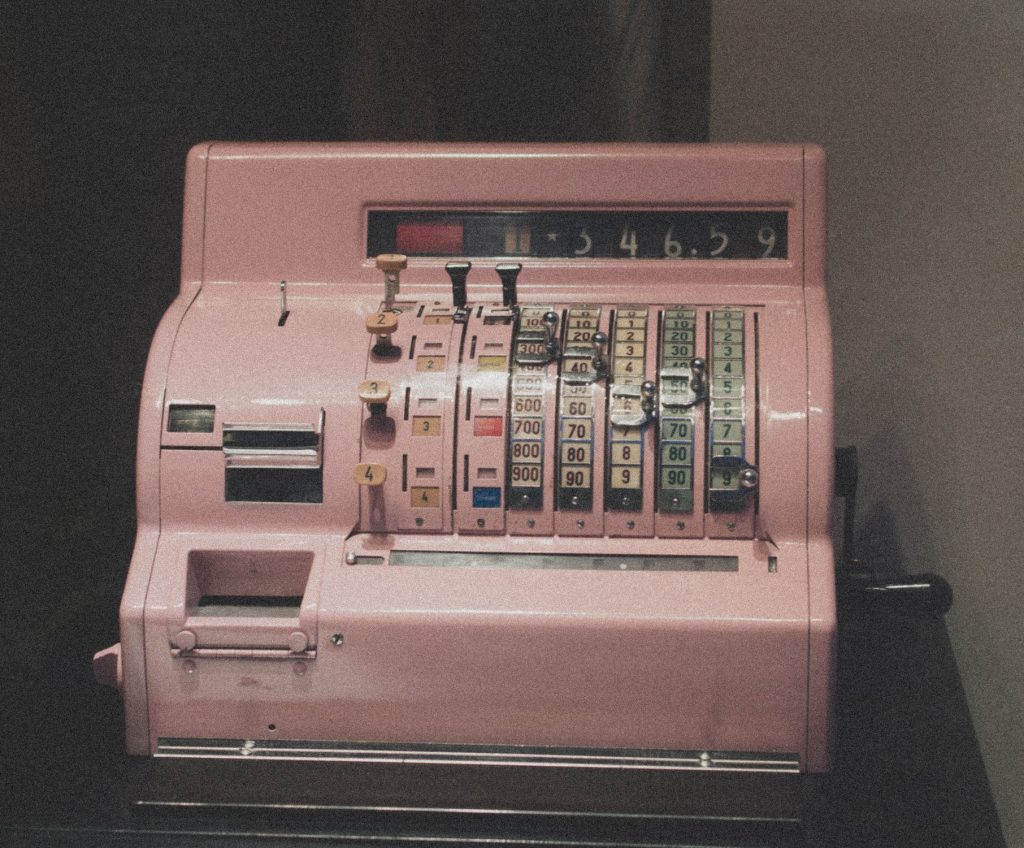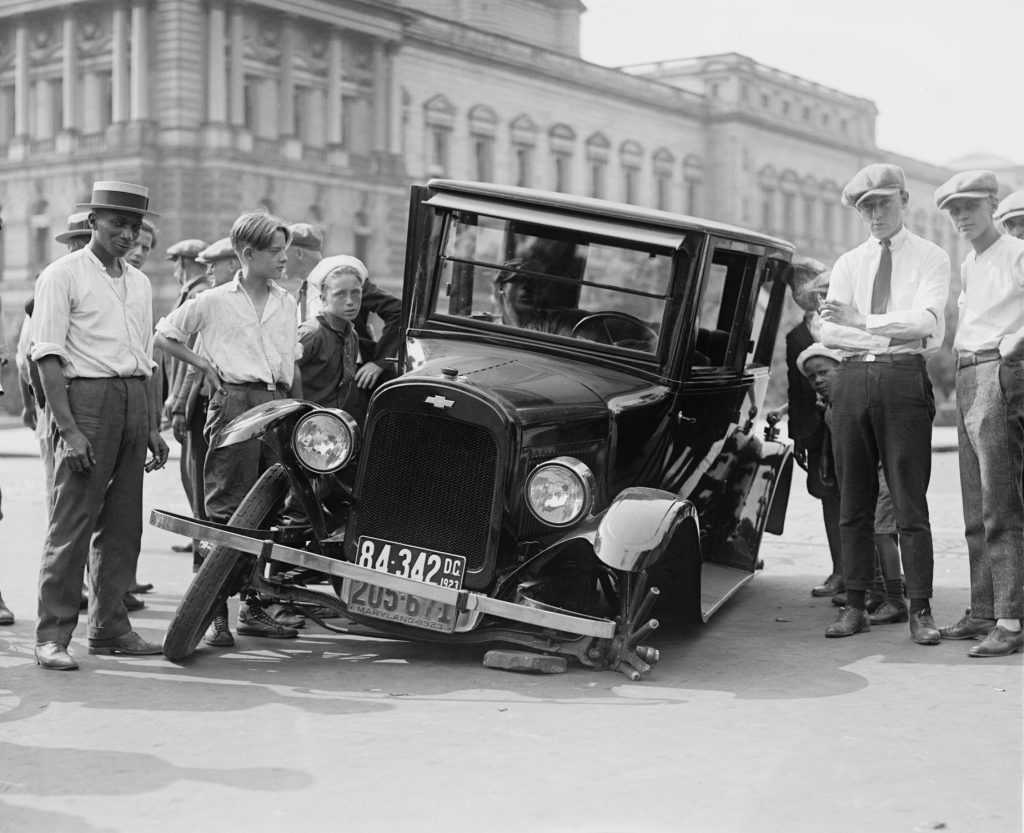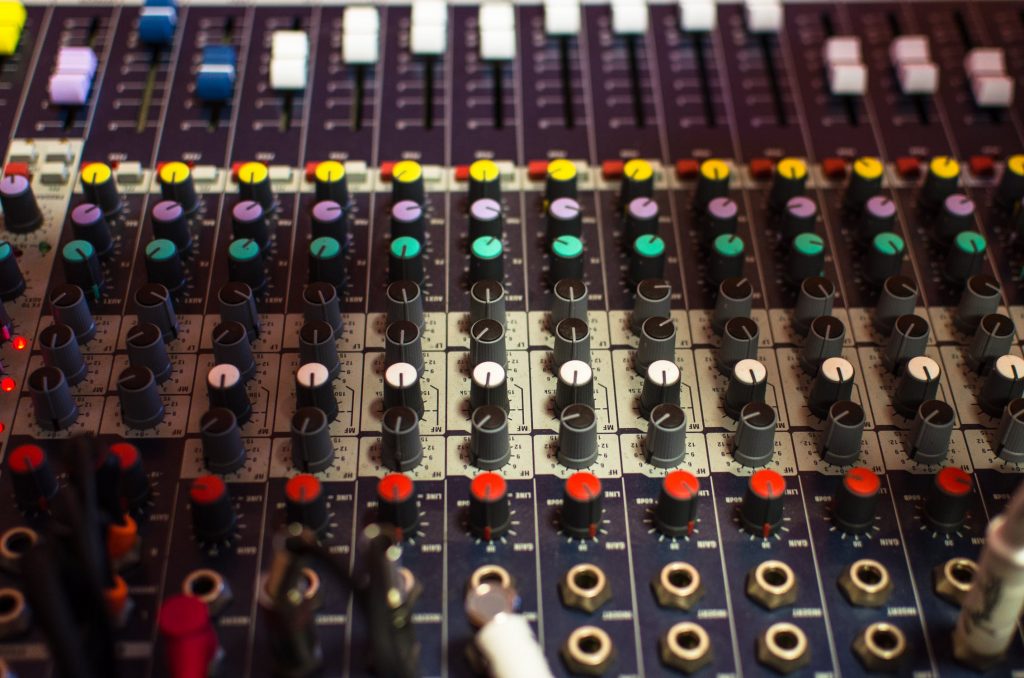
Once, black and white printing was the regular way to go. Full-color printing was expensive, special, tricky and unnecessary. Nowadays we don’t know much other than full-color printers, both in the office and at home. A black and white printer is long gone. Right?
Well, not quite. Printing labels still happens largely in black and white. The emphasis on STILL is because, sooner or later, change is going to happen.
Thermal printing: Ancient history or forever?
Are we on the verge of a major change in the label industry? Converting thermal label printing to full-color label printing is an apparent small change. Yet this seemingly small changes will have implications that just a few seem to expect. It is a pretty big change in both user experience as technical fields but also in mindset.
It may feel a bit strange, but printing in black and white with thermal label printers is the most normal thing in the world of labels. Not everyone is waiting for change or don’t think change is necessary at all. The market is stuck in old fashion fixed ways of thinking and working.
Still, it’s weird, too. Full-color printers are widely available, for only a few tenners one already buys a color printer for home and in the office you have to search hard to come across a black and white printer at all, they have become rare.

Change is inevitable
At the rise of the color printers for the office, the general opinion was “That will never be a success”. It would be too expensive, but above all unnecessary. The label industry is now also at that point, the full-color label printers are not known, not necessary, too costly, etc. As with the rise of the A4 color printers there is only a few who really believe in the rise full-color labelprinters.
I believe in “color”
I belong (thankfully) to the small group of people who firmly believe in full-color label printers ant think they will make black and white thermal printers redundant. I think that the color label printers will become normal in the coming years. As only a few others I believe that the color label printers like color office printers are going to dominate the market. I strongly hold the idea that printing labels in just black & white will be strange and full-color noting than normal. Just like with office printers these days.

Long road ahead
However, there are a lot of steps to take and even more assumptions and fears to dispel before there is a real turnaround. The turning point is not one moment when everyone switches at once, it goes step by step and takes years. Of course, there are already companies that are leading the way and first see the advantages in printing colour, and that will be more by the day. The benefits are many. Think of sales promoting product labels in retail, personalization of products and private labeling of products. More often, the advantages lie in the practical applications, we are naturally more sensitive to colour than to a text. This allows us to recognize label by colour better, faster and therefore more efficiently in practical solutions than by reading. Think of it as a label for red tulip bulbs, the red of the image is clear from a distance while the text has to be red and is therefore less easily recognizable and therefor more fault sensitive.

Prejudices and assumptions
The switch to full-color label printing and the future image what one has about this often goes hand in hand with many prejudices and assumptions. Partly true, partly untrue but often the truth is somewhere else or other than one expects. Let’s get a few of these assumptions and see where the truth lies.
Theorem 1: Printing labels in colour is too expensive and will therefore not be a success
This statement is partly true and partly untrue. First of all, yes printing labels and labels in color is more expensive than thermal black and white printing. Both the purchase of the printer as the consumables lies in terms of costs higher than that of thermal printing. The ink cost of an inkjet printer is currently up to 10x higher than that of TT ribbons. The label material itself also has a price that is 3-fold of the thermal counterparts. So too expensive, so no success, so never becomes anything, right?
I like to see this differently. Currently a company should certainly get a decent added value from personalizing the labels, or with practical Applications that yield so much in terms of margin of error improvement or efficiency, to make printing in colour profitable. The users who do it now are often pioneers who see opportunities where others don’t see them. Often these are relative successful with their products and applications. While relatively small in general these companies often see a much higher growth curve than the average growth.

The price of full-color label printing will eventually have to fall for the masses, not so much the purchase price of the printers but certainly the use. The magic word here is Volume. Why? Simple, thermal is currently so cheap because anyone can deliver it and it has become a real bulk product. It is produced in large mass and there is a lot of competition on the market. This while there is still a lot of uncertainty with inkjet, relatively little good material is available and not everyone is eager to supply this market due the relatively small numbers (new but scary). Most of them would rather sell a truck full of paper than 1 pallet of paper. The question of supply and demand which does not yet have the optimal ratio, both are still too low.
It is the story of the chicken and the egg as we’d like to say in Holland. For volume first price reduction is needed, for price reduction first volume is needed. Nevertheless, the volume is steadily increasing, resulting in a bit of volume and prices, however slow, creeping towards each other. The Snowball effect will therefore slowly do its job, if the price drops the demand grows and then the price drops which in turn makes for… etc. This pace will accelerate in the coming years. An important factor here is the deployability of the color label printers. The easier these are to use, the easier the volume increases..

Theorem 2: Label printers in color are unreliable
Again a theorem that certainly knows some truth. Not all colors label printers are equally reliable. There are printers where the print heads have to be replaced almost as often as the ink cartridges with a lot of costs and time loss as result. Especially in the past, the colors of label printers were more than once very unreliable, sensitive and had a lot of downtime and problems.
But also with the thermal printers there are, even today, brands known for moderate or even poor quality and reliability. On the other hand, there are many brands that are known for the high quality and reliability. If you look at brands like Zebra and Godex you simply know you can trust their products. Same goes for full-color labelprinters, where some brands may disappoint or fail, other brands, like the Epson ColorWorks, will be known for their high quality.
However, a color label printer needs a different treatment than a thermal printer. An inkjet printer, including the colour label printers, has to clean their heads from time to time to prevent clogging of printer nozzles and will therefore always have to be powered. But I don’t think anyone would have a problem with that, as long as we know of this. If we don’t know and find out for ourselves, we quickly experience the printer as “unreliable” even though it was actually preventable if we had the knowledge.
In short, there is a chance if an unreliable full-color labelprinter. But in general with good reading and looking to the better brands, you could buy a fantastic printer. That makes this statement overall not true.

Theorem 3: Color label printers are slow and cannot be integrated into automatic systems
Also in this theorem we see a piece of assumption and a piece of truth. Here we must not forget that thermal printers have been around for almost 50 years and have now been completely developed. Although we have color printers for some years, the development of color label printers is a completely different story. The technique of color label printers is still in its infancy, compared to the thermal one. This while the technology of this printers is quite a bit more complex than that of a thermal.
The most recently launched Epson ColorWorks CW-C6000 series is a fine example of progress. For example, Epson managed to provide an inkjet color label printer with a built-in peeler unit that gives the printer a “one-by-one” functionality. This new Epson printer series makes inline full color printing a realistic option.
Market developments
I have previously described the process which will take place in the coming years in which technical developments, increases in volumes and costs will be inextricably linked. A step or increase in one will increase the rest and visa versa.

Where were we in early 2019?
At the beginning of 2019 there were 3 brands in the basic printing techniques that were actively engaged in color label printers. These three brands, all inkjet, are not all equally known in the market. Take Canon Bubble Jet, only when you’re in the business of (color)printers do you know this brand.
That’s because Canon Bubble Jet but also Memjet only make the print engines. The printers themselves are built by the various printer brands that use these printer engines as a core.
The third in the list is EPSON. This brand decided to invest billions in the development of an entirely new print head, really new from scratch. Epson has chosen to redevelop the print head and forget about how we did it in the past. Resulting in the new Epson PrecisionCore print heads. These printheads are only used by Epson in its own printers and are not sold as OEM products to other brands. This print head is unique in its kind and of a very high quality in reliability. This gives Epson a unique market position.
Epson fact: The developed PrecisionCore print heads are also used in office printers, large format printers and self-digital printing machines.
The year 2020, year of the next steps?

By the end of 2019, there were already some signs and it was already clear that there was some big news in the market of color label printers. There where more and more additional machines on the market. Machines such as digital finishing systems that cut out the labels after printing and thus increase flexibility even further. But also news about the development of the printers themselves where widely seen.
So did OKI finally released its LED laser printer. A label printer with a high purchase value and plenty of possible applications and possibilities to offer with it. However, in practice, this printer often doesn’t meet its expectations when it comes to usability. However, I look forward to the next steps that will be made with the development of these printers. I wonder however if they will ever are able to beat the inkjet printers. I believe a side by side existence will be an end result.
Epson announced the ColorWorks C6000 series at many global events at the end of 2019. This new range of printers also really sacrifices new possibilities and fills gaps in the market that left others open. With about 4 printers, the CW-C6000A, CW-C6500A, CW-C6000P and the CW-C6500P, Epson hopes to open up new markets by creating new opportunities.
Wide range of deployability
The magic of the new Epson printers is the wide range of possible ways of using and integrating. Epson places the CW-C6000 series, which consists of 4 new printers, between the existing ColorWorks printers. Both price level and specifications such as speed places the ColorWorks C6000 series is between the ColorWorks C3500 and the ColorWorks C7500(G). This fills the “gap” Epson had between the existing models and makes the Epson ColorWorks range more complete so to say.
In addition, Epson has spent a lot of time in other matters that benefit the potential use in a wide scale of applications. Many of these developments and expansions have been made based on demand in the market and the information of current users.

Drivers and control
For example, the new CW-C6000 series is not equipped with Windows drivers, such as the C3500 and C7500(G). At the urging of the market, Epson has also provided this printer range with drivers for Mac OS, iOS and Linux. But also things like a good integration into SAP software, Nicelabel and Bartender got a lot of attention so that this functions optimally.
Because the
printers also mainly have the purpose of replacing many thermal applications,
the CW-C6000 series is also equipped with ESC/Label. This means that the
printer can work via simple programming language, allowing it to process ZPL
print commands without any problems.
ZPL is a widely used command set to control thermal printers.
By taking away settings such as temperature control and processing only the
actual print commands, an Epson ColorWorks C-6000 can process this command as a
black and white print command. This allows the Epson CW-C6000 series to
initially replace the thermal printer without any changes and adjustments to
the current way of processing print jobs. Then you can work without any stress
or standstill on adding the colors. ESC/Label uses ZPL commands as a base and where
the non-applicable thermal setting are deleted or ignored, commands that can
add color have been added.
However, control does not stop with drivers and command sets. Epson has used all internal divisions for this printer. For example, the office printers division integrates the intelligent web interface and the CW-C6000 printers can be set up through various useful tools. These are not only more complete than those of the C3500 and C7500, and also much more user-friendly. From the large format printer division comes a piece of color management that can get a huge improvement in color fastness. By color calibration, a profile can be created for the different printer materials that are used. The deviations and differences of colours per material are thus a thing of the past.
Peeler

Mentioned earlier, the peeler. Within the thermal printers a standard option and widely used but for the color label printer completely new. Despite many challenges, Epson has managed to combine a peeler function with the tricky backfeed of the inkjet label printers.
The peeler function is as simple as it is important. By separating the labels from the backing paper only the label is “handed”. This system can be integrated into both automatic as in manual print & apply solutions. Combined with the above control, this is a 2e step to replace thermal printers 1 to 1 and potentially a huge efficiency improvement.
Operator
An operator, the one who physically operates and works with the printer, is sometimes forgotten by product development. Not with the development of the Epson ColorWorks CW-C6000 series. Whether the operator is left, right in front of or behind the printer, replacing label roles is easy to do. Due to the innovative roll cover that can be opened at both the front and the rear the operator has good access for changing the rolls from every side of the printer. Removing the whole top cover is also possible.
The front color display also offers many setting possibilities, which are made easier compared to the previous printers. In addition, the screen not only provides information about ink levels but also about the amount of available printer media.
A color labelprinter printer was never so easy to operate as the Epson Colorworks CW-C6000 series!

Print range
Where previous Epson Colorworks models were limited to a printing width of just 4 inch (about 10cm) we are happy to see that the new CW-C6000 series are able to print beyond 8 inch (more than 210 mm!). This created a lot of new potential use of the Epson ColorWorks printer where previous models where not able to serve the needed labels due the limited with of 4 inch.
GSH standards
The Epson CW-C6000 series also features the Epson “DURABrite Ultra Ink” pigmented inks, which also makes this printer meet all the requirements to print full-fledged GHS labels together with the right printer media. Together with the width of the CW-C6500Ae and CW-C6500Pe, it is therefore quite possible to Label barrels and other chemical packaging with labels that comply with the BS5609 standard. This is not only a solution for simple and practical labels, but also for product labels that need to withstand difficult environments.
Future
We are certainly not there yet and in addition to Epson, other brands such as OKI and Primera will constantly try to fill market demands and market opportunities to the fullest due to technical developments.
Nevertheless, the snowball has grown in during the last year and, once the Epson ColorWorks CW-C6000 is available in the market, we will see new markets making the switch to full-color label printing again. The “snowball” effect will therefore show a significant growth again. It is mainly the question of how fast it will grow and not whether it will grow. Because added value of colour can be found in the most unthinkable places.
Where and when
That is often the question in new markets. No one knows exactly and often the market that suddenly switches over is not the one you’d expect. Often it is an unexpected market that suddenly makes a switch. It is often 1 or 2 companies in an industry that switch on their own resulting in many other that will have to follow to meet the new market demands created by there competitors.
I have often expressed expectations in conversations that are described as naïve or unrealistic. Often about applications where no one would even expect color to be used. Not even when it only costs 1 cent per 10 extra labels. Still I’m able to get those to how call in naïve and unrealistic to think about those ideas. Sometimes even get them on board whit these ideas and expectations on such Color Applications. It often just a mindset and handing them ideas. So I wonder, could I do the same with the readers this time. Get them on board in think about the possibilities of full-color label printing in an unexpected application. That’s why I have an example of such a possible way of using a full-color label printer in an application that many would say, “never”:

Shipping labels
Which widely used application has such low requirements and simple demands as shipping labels? Often the only demand here is “How cheap can you do it?” A shipping label is placed on a package in the warehouse, the package arrives the next day and the label disappears with box in the bin. The shipping label therefore has a very short life span, a simple application and therefore the added value of colour is difficult. Sure you can make all kinds of arguments for colors in logistic sense. In my opinion, most logistic challenges these days are already solved by using barcodes in automatic sorting systems. Sorting machines are not human and therefore less sensitive to color. Therefor it’s almost impossible to add some real value here for colors. .
So where could
you create value for full-color shipping labels? Simple;
Say that UPS or DHL extends the shipping
labels by 15mm and is going to sell this space as an advertising space? Let UPS/DHL
compensate their customers for the higher purchase price and higher costs per
printed label by sharing the sold advertising space, and I’m sure you would be
surprised by the high income this could potentially generate. Did you see some
money there? I know I did.
Thermally over and out?
No, I’m not going to pretend that thermal label printing will really disappear in the next few years. It is my opinion however that full-color label printing will be the new standard. Just like with full-color office printers. But there will always be applications and users who will opt for thermal label printing for whatever reason. However, these will be the rare exceptions in 20 years’ time and there will still be much to be done before we are ready for this.

